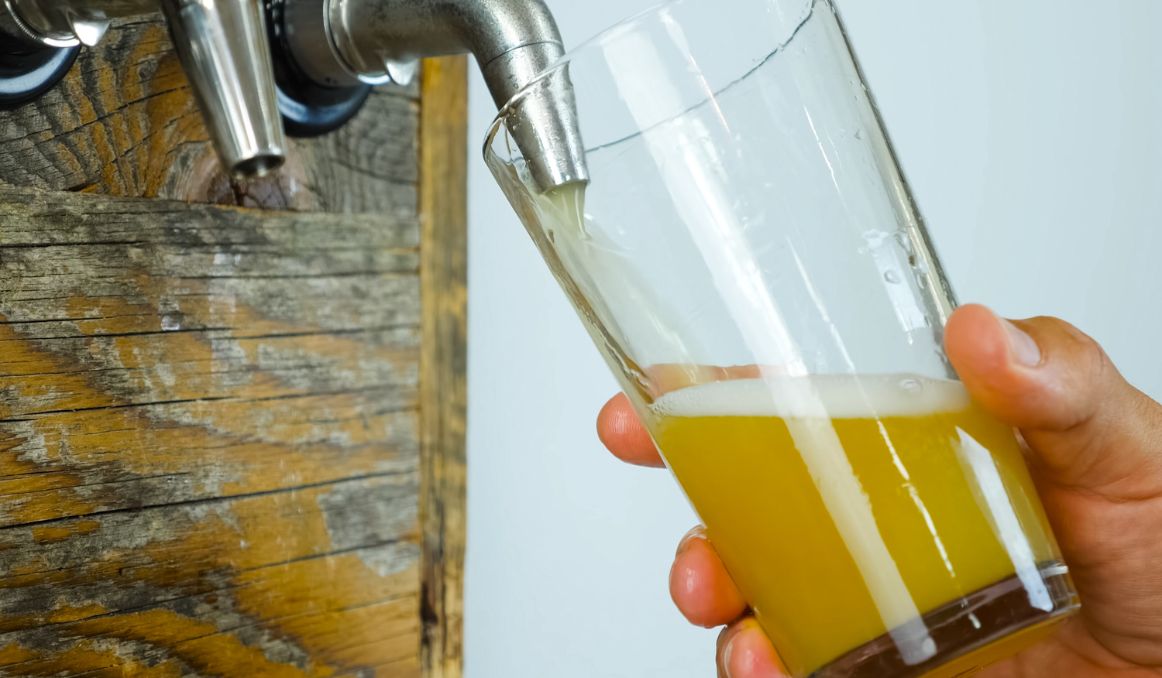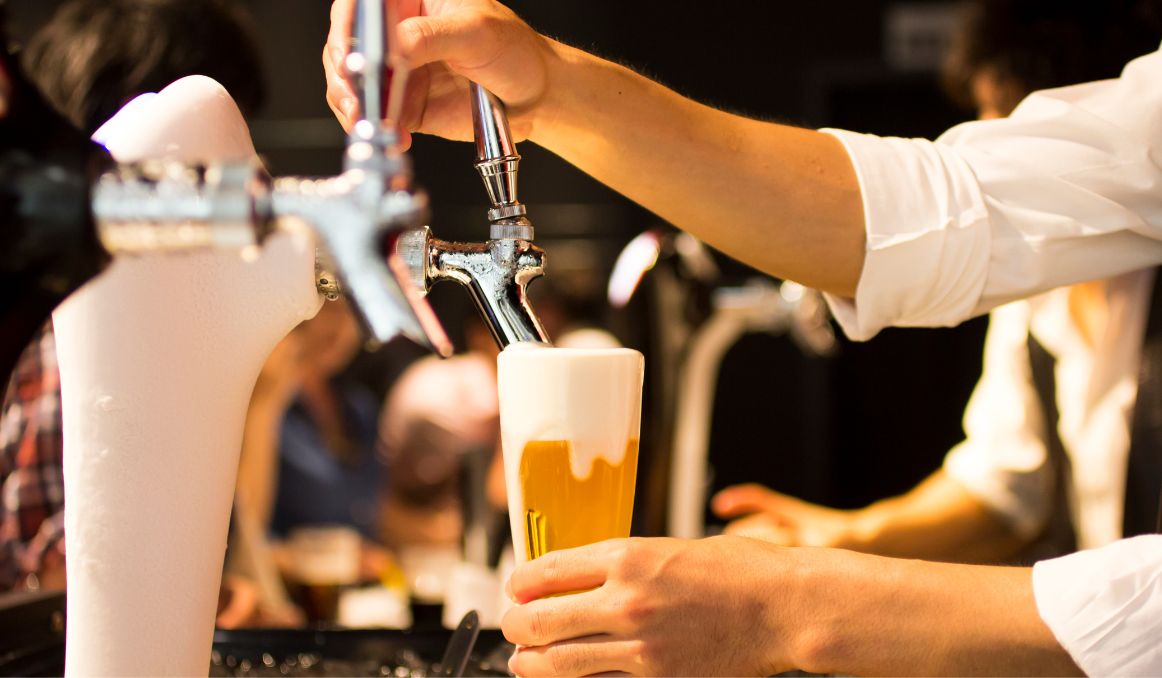What Is Premium Draft Beer?
We call beer so many things these days, by so many different names, that it can get confusing for both brewers and beer drinkers alike. What am I supposed to be brewing? What am I supposed to be drinking? Does any of it really matter?
The answer, as with most things, is it depends.
First, let’s look at some of the common terms used today and what the literal and figurative definitions tell us.

Draft Beer
Draft beer, also known as draught beer, is beer made specifically for a barrel or keg that is then tapped and typically served at a bar, pub, or restaurant, but can also be used by individuals. It is highly pressurized, stored in large quantities, and typically tastes fresher than bottled beer mainly because of those specific storage requirements and the close attention to detail.
Draft beer can be anything from class Budweiser or Coors to a more expensive Heineken or Stella. Any beer can be served on draft and stored in a keg, and there is no real difference in the brewing process. Indeed, a large quantity of beer can ostensibly be made by a major beer company with some of it bottled, some canned, and some placed in kegs, all from the same batch and vessel.
Price will relate more to where you get the beer – a supermarket versus a pub, for example – and the materials in which the beer is stored – cans are cheaper than glass bottles.
Craft Beer
Craft beer is the name the beer industry has used since the advent of smaller breweries which have begun popping up in recent decades to compete with larger corporations.
To get the designation of a craft brewery, it must produce 6 million barrels of beer or less per year.
When we think of craft beer, we imagine a single owner, or maybe a partnership of two or three buddies, whose interest in beer grew into a production, sales, or marketing strategy.
The hallmark of craft brewers is innovation. While we think of larger breweries like Budweiser or Heineken as stalwart and stable, we think of craft breweries as experimental and open to new ideas.
Of course, there is great risk in craft brewing; brewers may lose money on a failed batch and even lose loyal customers for getting too experimental.
Thus it is a delicate line craft brewers must toe in order to continue to innovate, maintain their loyal followers, and attract new beer drinkers.
Premium Beer
Premium is perhaps the trickiest of all these terms as it is defined differently from different angles.
Ask any person on the street, and they will likely tell you that premium means either more expensive or of higher quality, and usually both at the same time.
By that reasoning, premium beer should be top quality and pricier than other more standard beers.
But the beer industry takes a different tack entirely.
According to them, premium is determined by ABV alone.
Any lager above 4.5% ABV is considered premium, and any ale above 4.2% ABV is considered premium.
By that reasoning, the higher ABV, the more premium, even if the beer is cheap, of low quality, and not favored by beer drinkers across the board.
At the same time, you may find yourself in conversation with an avid beer drinker who sings the praises of a particular brew or two and refers to it as premium, having no idea that the beer industry uses this term only for ABV.
So it would pay to clarify what your friend means when they say “premium.”
Premium Craft Beer
These definitions meant that premium craft beer, then, would merely refer to a craft beer, a beer made by a smaller brewery, that has a higher ABV.
At the same time, Susan Mayman, the managing director of Freedom Brewery, says “A premium beer is part of a small group of beers at the top end of the market. Its drinkers will be aspirational and discerning, putting quality before price. Its producers will be highly-skilled craftsmen, putting quality before profit.”
So there you have it. The issue of what is premium and what is craft is clearly still hazy and up in the air.
Still others in the craft industry will avoid the term craft altogether simply because they don’t like the overuse of the word and want to entirely redefine beer.
Premium Draft Beer

If you hear the term premium draft beer, then, it could go either way.
You may be about to drink an expensive, high-quality beer on tap.
Or you could be in for a high ABV beer that is not that great, also on tap.
At the very least, the term draft is not in question.
You’ll be drinking beer on tap from a keg.
How to Decide?
If you’re a beer drinker, your best bet is probably going to be to ask more questions.
Ask about the brewery, about flavor and aroma, about bitterness, and even about texture.
One of the greatest things many pubs, breweries and even restaurants do today is offer flights, so you can try the beer before you invest in a whole pint or pilsner.
Ask for a taste and make your decision then.
For brewers, it will be up to you to decide how to brew, if you want to be known as a craft brewer or an independent brewer, if you want to aim for premium beer, meaning higher ABV, or if you want to avoid that term entirely.
In the end, you can look forward to true beer lovers being more attracted to your flavor and aroma, and even your packaging and branding, than they are worried about whether your beer is “premium.”
The key is to have fun innovating, remaining consistent in your production, and trusting your fans to give you feedback.
Cheers!
Passionate about the beer and/or wine making process? So are we! If you’re interested in finding out how you can use our technology to control fermentation and monitor your yeast, save work hours and improve the cost-efficiency of your business, drop us a line at [email protected] or check out our product pages:
- Oculyze BB 2.0 (Better Brewing) Yeast Cell Counter App + Hardware
- Oculyze FW (Fermentation Wine) Yeast Cell Counter App + Hardware
Also, you can now get access to a fully functional demo account to test your yeast via our Web App. Completely free of charge and with no commitment to purchase.
Sources:


